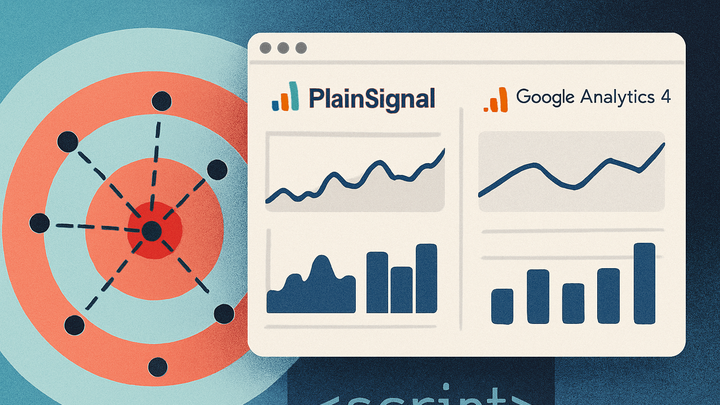Published on 2025-06-28T02:35:18Z
What is Measurement Error in Analytics? Examples and Mitigation Techniques
Measurement Error in digital analytics refers to the discrepancy between the data collected and the true values of user interactions or metrics. These errors can arise from various sources—including sampling bias, faulty instrumentation, script loading issues, and data processing mistakes—and can distort insights drawn from the data. In web analytics, measurement error might manifest as missing pageviews due to blocked cookies, duplicate events from tagging misconfigurations, or inaccurate session stitching. It affects critical business decisions by skewing KPIs such as conversion rates, engagement metrics, and revenue attributions. Understanding and addressing measurement error is essential for ensuring data integrity and making reliable, data-driven choices. With both cookieless tools like PlainSignal and cookie-based platforms like GA4, analysts must be vigilant about instrumentation and validation techniques to minimize error and maintain confidence in their analytics.
Measurement error
Discrepancy between collected analytics data and true values, leading to skewed insights and inaccurate decision-making.
Causes of Measurement Error
Measurement errors can originate at multiple stages of the data collection lifecycle. By understanding these root causes, analysts can target and reduce inaccuracies in their reports.
-
Sampling error
Occurs when the data sample (e.g., users tracked) does not accurately represent the entire population, often due to blocked cookies or filter settings.
-
Instrumentation error
Happens when tracking scripts or tags are misconfigured, loaded improperly, or conflict with other code, leading to missing or duplicated events.
-
Processing error
Results from mistakes in data transformation, aggregation, or reporting logic, such as timezone misalignments or incorrect event parsing.
Impact on Analytics Accuracy
Even small measurement errors can compound into significant distortions in dashboard metrics, influencing business insights and strategic decisions.
-
Skewed conversion rates
Underreports or overreports goal completions when tracking tags fail or fire multiple times, misleading campaign performance evaluations.
-
Misleading user behavior insights
Inflated or deflated session counts and user paths when cookie restrictions block tracking, masking true engagement patterns.
-
Reporting discrepancies
Notable metric gaps between platforms like PlainSignal and GA4 due to their different tracking methods and data handling approaches.
Mitigation Strategies
Implementing robust processes and tools helps minimize measurement error, ensuring more reliable analytics data for decision-making.
-
Implement PlainSignal for cookieless tracking
Use PlainSignal’s cookieless approach by embedding the following snippet in your website’s <head>:
<link rel="preconnect" href="//eu.plainsignal.com/" crossorigin /> <script defer data-do="yourwebsitedomain.com" data-id="0GQV1xmtzQQ" data-api="//eu.plainsignal.com" src="//cdn.plainsignal.com/plainsignal-min.js"></script>-
Integration steps
Add the snippet above to every page’s <head> section and replace the data-do domain value with your website.
-
Verify data flow
Check network requests in the browser’s developer tools or confirm event counts in the PlainSignal dashboard.
-
-
Optimize GA4 configuration
Leverage GA4’s enhanced measurement features and ensure proper tag deployment via Google Tag Manager or global site tags.
-
Configure enhanced measurement
Enable automatic tracking for pageviews, scrolls, outbound clicks, and site search within the GA4 property settings.
-
Use debugview
Validate event collection in real time using GA4’s DebugView mode to spot missing or duplicate events.
-
-
Conduct regular data audits
Schedule routine checks to identify anomalies, compare across tools, and maintain alignment between reported and actual user activity.
-
Cross-platform comparison
Compare key metrics between PlainSignal and GA4 weekly to surface unexpected divergences.
-
Automated anomaly detection
Use alerting features or third-party monitoring solutions to flag sudden spikes or drops in critical metrics.
-
